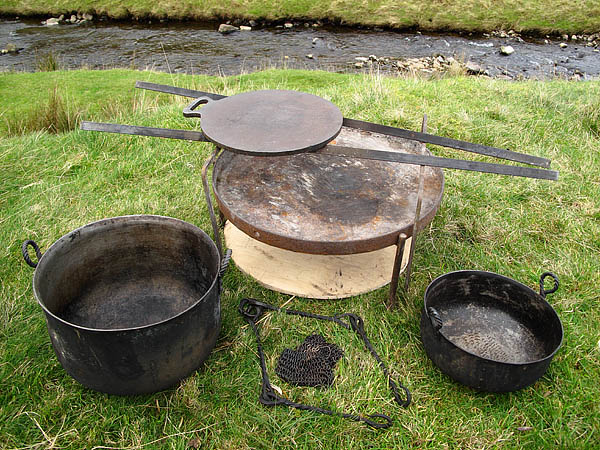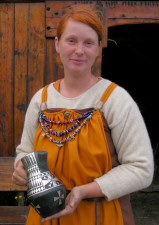I think the quality of the clay impacts on the weathering tbh.
Where I stay we have layers of puddle clay. It's absolutely perfect for pot making, and for fancy glazed tiles.
Dug straight from the ground I can add crushed shell and make pots with it within days.
One of the ceramics lecturers at Glasgow School of Art organised a project to recreate the local Bronze Age pottery using clay from the river Avon gorge at Chatelherault near Hamilton.
He said he couldn't imagine a better clay for that style of pot.
I'm not naysaying your information Glosfisher, but I do think it depends on the clay and that's ultimately up to the area it comes from.
It kind of makes it easier for some of us, doesn't it ? Harder for others too.
I'll be more aware of the differences now. I just take it for granted that clay is clay; obviously not.
Neat idea using the cauldrons Wayland

I watched a huge open field firing in Latvia at an experimental archaeology conference.
The potters had made and enormous pile of bowls, piled up there were enough to cover at least a metre square by maybe two thirds high.
They built a ring of logs around the pile, maybe a metre and a half away from the pile, and set them alight. As the fire burned they moved the timbers closer while the pots dried out thoroughly, and heated up to biscuit stage. The they covered the pile with the still burning timbers and ashes and added more fuel. (in the middle east potters add shovelfulls of sorghum winnowing debris to their open kiln to raise the final temperature at this stage)
It was left alone to burn out over several hours. Even a downpour didn't put it out or was protected against.
When they finally pulled the pile apart, not one single pot was broken

and all that was left that would be found in the archaeological record was that at some point there had been a fire on that site.
Fascinating to watch

cheers,
M




